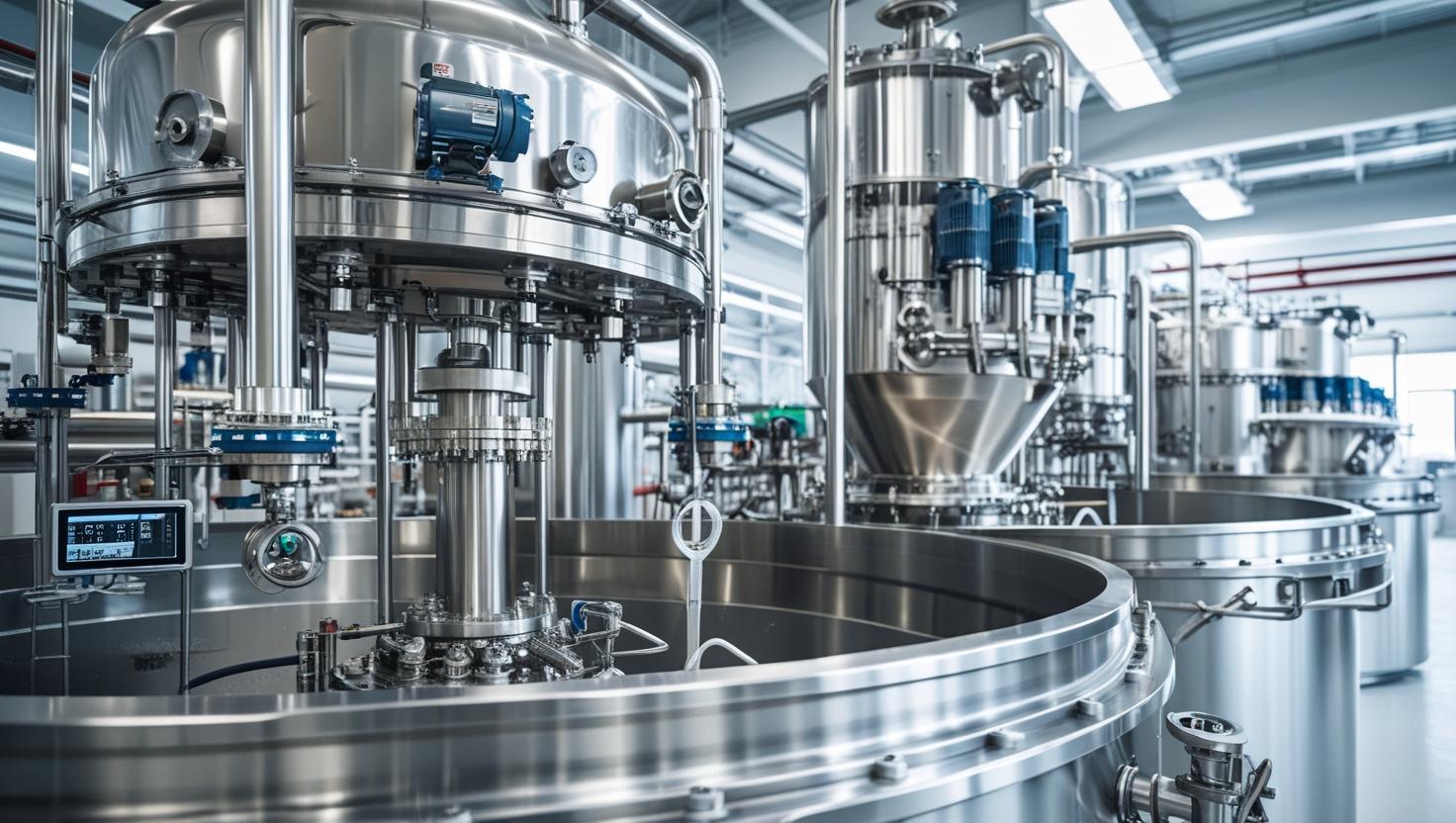The global industrial mixers market is undergoing a significant transformation as industries demand more precision, scalability, and sustainability in their mixing and blending operations. From food processing and pharmaceuticals to chemicals, water treatment, and construction, the use of mixing equipment has expanded far beyond basic blending. Between 2025 and 2029, the market is expected to grow steadily, driven by advances in automation, the integration of smart technologies, and stricter environmental and quality standards.
Precision Becomes the New Standard
As end-use industries become more specialized, the need for precise, repeatable mixing has grown exponentially. In sectors like pharmaceuticals, cosmetics, and food & beverage, even small inconsistencies in formulation can lead to product failure, regulatory issues, or brand damage. Manufacturers are increasingly adopting industrial mixers that allow for tight process control, real-time monitoring, and recipe customization.
Advanced control systems, often integrated with AI and IoT platforms, enable mixers to automatically adjust parameters such as mixing speed, torque, and duration based on material behavior or external inputs. This level of responsiveness is particularly valuable in batch processing environments, where accuracy and consistency are essential for quality and compliance.
Download PDF Brochure @
https://www.marketsandmarkets.com/pdfdownloadNew.asp?id=59649096

Scalability Across Diverse Industry Needs
Industrial mixers now serve a wide array of industries with varying capacity and processing requirements. From small-batch laboratory mixers to massive inline systems used in continuous manufacturing, scalability has become a key market differentiator. As companies expand operations or shift toward high-volume, high-speed production lines, they require mixing equipment that can scale up without compromising quality.
Modular mixer designs, flexible rotor-stator systems, and custom impeller configurations are becoming more common, allowing manufacturers to adapt equipment to multiple production lines or new product formulations. In construction, mining, and energy sectors, the need for heavy-duty mixers capable of processing viscous or abrasive materials further drives demand for robust, high-capacity systems.
Sustainability and Energy Efficiency Take Center Stage
Environmental concerns and energy efficiency targets are reshaping capital equipment investments across industries. Industrial mixers are no exception. Modern designs now focus on energy-efficient motors, reduced mixing times, and lower material waste, helping companies align with global sustainability goals.
Manufacturers are also prioritizing clean-in-place (CIP) and sterilize-in-place (SIP) capabilities, which reduce water and chemical use during maintenance, particularly in the food, beverage, and pharmaceutical sectors. The shift toward eco-friendly operations is prompting equipment vendors to innovate around cleaner materials, recyclable components, and designs that minimize lifecycle emissions.
Technological Integration Driving Competitive Advantage
The digital transformation sweeping through manufacturing has firmly reached the mixers market. Smart mixers with integrated sensors, data analytics, and cloud connectivity are providing unprecedented insight into mixing efficiency, performance trends, and maintenance needs. Predictive maintenance, powered by AI, is helping to minimize downtime and extend equipment life, giving operators more control over operational reliability and cost.
Augmented by digital twins and simulation tools, engineers can now model entire mixing processes before physical deployment, saving both time and cost while enhancing design efficiency. This level of intelligence is becoming a competitive advantage, especially for companies operating in highly regulated or high-throughput environments.
Regional Dynamics and Market Leadership
North America and Europe continue to lead in technology adoption and regulatory-driven demand, particularly in pharmaceuticals, chemicals, and food production. However, Asia-Pacific is projected to witness the highest growth during the 2025–2029 forecast period, fueled by rapid industrialization, infrastructure development, and a growing middle class demanding consumer-grade products.
Local manufacturers in China, India, and Southeast Asia are expanding their product portfolios, while global leaders are investing in regional partnerships and distribution networks to strengthen their footprint in emerging economies.
Outlook: Smart, Clean, and Scalable Mixing Solutions
The outlook for the industrial mixers industry from 2025 to 2029 is one of innovation, adaptation, and growth. As industries evolve, so too must the technologies that support them. Manufacturers are increasingly prioritizing equipment that delivers not only performance and scalability but also energy efficiency and digital integration.
Industrial mixers are no longer just mechanical systems—they are becoming intelligent, connected platforms that drive quality, reduce environmental impact, and ensure operational agility. Companies that embrace these advancements will be best positioned to meet the complex demands of modern manufacturing in the years ahead.
Frequently Asked Questions (FAQ)
1. What are “Next-Gen” industrial mixers?
Next-generation (Next-Gen) industrial mixers incorporate advanced technologies such as IoT (Internet of Things), smart sensors, automation, and real-time monitoring. These mixers are designed to optimize mixing processes, reduce manual intervention, and enhance efficiency, accuracy, and scalability.
2. How do IoT and smart controls improve industrial mixing operations?
IoT-enabled mixers can monitor parameters like temperature, viscosity, torque, and RPM in real time. Smart controls allow automatic adjustments during operation based on sensor data, ensuring consistent quality, reducing downtime, and minimizing energy consumption.
3. What industries benefit most from these technologies?
Industries such as food & beverage, pharmaceuticals, chemicals, cosmetics, and paints & coatings benefit significantly from smart mixers due to their need for precise, consistent, and compliant mixing processes.
